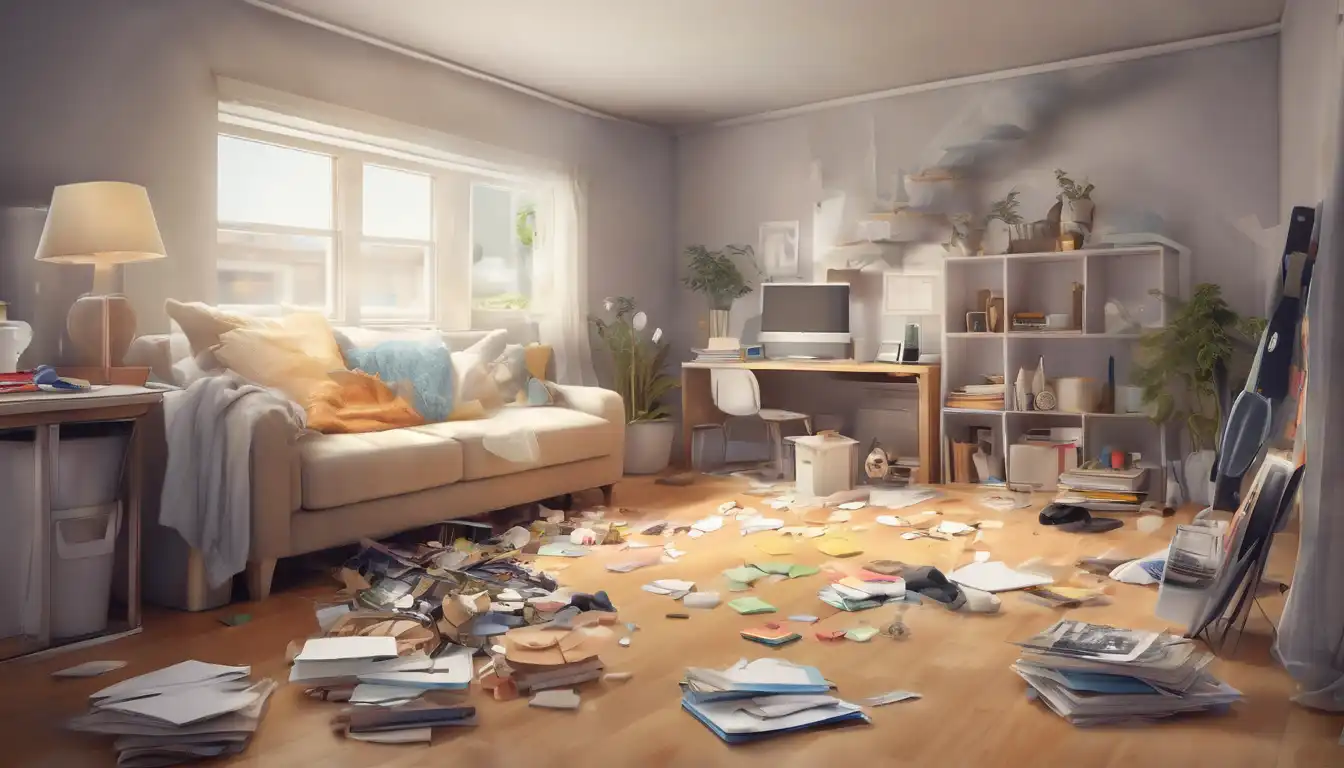Quick Home Decluttering: 7 Simple Steps to Transform Your Space
Feeling overwhelmed by clutter? You're not alone. Many homeowners struggle with maintaining an organized living space, but the good news is that decluttering doesn't have to be a monumental task. With the right approach, you can transform your home from chaotic to calm in just a few hours. This comprehensive guide will walk you through seven easy steps to declutter your home quickly and effectively.
Why Decluttering Matters More Than You Think
Before we dive into the practical steps, it's important to understand why decluttering is worth your time. A clutter-free home reduces stress, saves time searching for items, and creates a more peaceful environment. Studies show that physical clutter can contribute to mental clutter, making it harder to focus and relax. By taking control of your space, you're not just cleaning—you're investing in your well-being.
Step 1: Set Clear Goals and Timeline
Start by defining what you want to achieve. Are you focusing on one room or tackling the entire house? Set realistic goals and allocate specific time blocks. For example, "I'll declutter the living room this Saturday from 9 AM to 12 PM." Having a clear plan prevents overwhelm and keeps you motivated. Remember, perfection isn't the goal—progress is.
Step 2: Gather Your Decluttering Toolkit
Preparation is key to efficient decluttering. Gather these essential supplies before you begin:
- Three boxes or bags labeled "Keep," "Donate," and "Trash"
- Cleaning supplies for surfaces you'll uncover
- A timer to maintain focus
- Storage containers for items you're keeping
- Labels for organized storage
Step 3: The Four-Box Method in Action
This proven method simplifies decision-making. As you work through each area, place every item into one of four categories:
- Keep: Items you use regularly or truly love
- Donate: Things in good condition that others could use
- Trash: Broken, expired, or unusable items
- Relocate: Items that belong in another room
Be ruthless but realistic. If you haven't used something in over a year, it's probably time to let it go.
Step 4: Tackle One Area at a Time
Start with the most visible or most-used spaces first. The kitchen and living room often provide the biggest impact. Work in small sections—don't try to declutter an entire room at once. Begin with a single drawer, shelf, or countertop. Completing small areas gives you quick wins that build momentum.
Step 5: Implement the 15-Minute Daily Habit
Decluttering isn't a one-time event—it's an ongoing process. Commit to spending just 15 minutes each day maintaining your progress. This could mean sorting mail immediately, putting away items after use, or tackling one small clutter hotspot. These small daily actions prevent clutter from accumulating again.
Step 6: Create Smart Storage Solutions
Once you've pared down your belongings, organize what remains. Use vertical space with shelves, invest in drawer dividers, and label everything. The goal is to have a designated home for every item you keep. This makes tidying up quicker and helps family members know where things belong.
Step 7: Establish New Habits to Maintain Results
The final step is creating systems that prevent future clutter. Implement these habits:
- The "one in, one out" rule—when you bring something new home, remove something old
- Regular donation trips every season
- Immediate decision-making for new items (keep, donate, or return)
- Weekly 10-minute family tidy-up sessions
Room-Specific Decluttering Tips
Kitchen: Start with expired food and duplicate utensils. Keep countertops clear for food preparation. Use drawer organizers for utensils and cabinet shelves for pantry items.
Living Room: Focus on surfaces like coffee tables and entertainment centers. Limit decorative items to a few meaningful pieces. Use baskets for remote controls and magazines.
Bedroom: Tackle clothing first using the seasonal test. If you haven't worn it in a year, donate it. Use under-bed storage for seasonal items and keep nightstands minimal.
Bathroom: Dispose of expired medications and beauty products. Use drawer dividers for toiletries and install shelves for towels.
Overcoming Common Decluttering Challenges
Many people struggle with sentimental items or fear of wasting money. For sentimental objects, take photos before letting go. For expensive items you never use, consider selling them or repurposing them. Remember that keeping something you don't use is actually wasting the space it occupies.
The Mental Health Benefits of a Clutter-Free Home
Beyond the physical space, decluttering offers significant psychological benefits. Reduced visual noise can lower anxiety levels, and the act of organizing provides a sense of control. Many people report better sleep, improved focus, and increased productivity after decluttering their homes.
Maintaining Your Decluttered Space Long-Term
Consistency is key to maintaining your results. Schedule quarterly "declutter days" to reassess your belongings. Involve family members in the process so everyone understands the system. Celebrate your progress—each cleared surface is an achievement worth acknowledging.
When to Seek Professional Help
If you're dealing with extreme clutter or emotional attachments that prevent progress, consider consulting a professional organizer. They can provide objective guidance and customized systems for your specific needs. Sometimes an outside perspective is exactly what's needed to break through decluttering barriers.
Decluttering your home doesn't require massive time commitments or special skills—just consistent effort and the right approach. By following these seven steps, you'll create a home that feels spacious, peaceful, and truly functional. Start small, celebrate progress, and remember that every item you remove creates space for what truly matters in your life.
